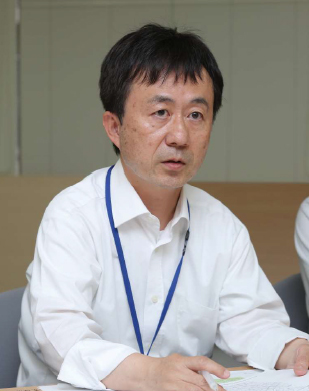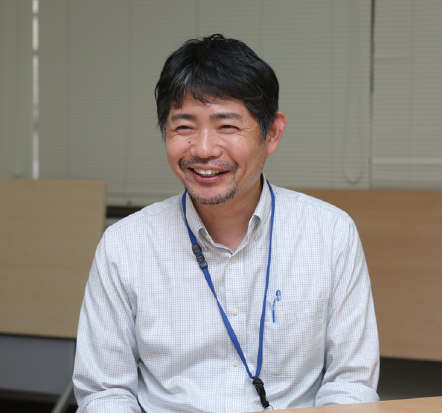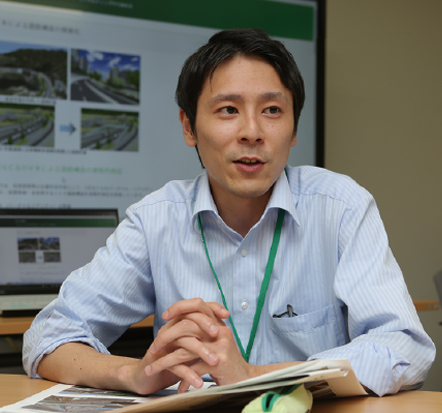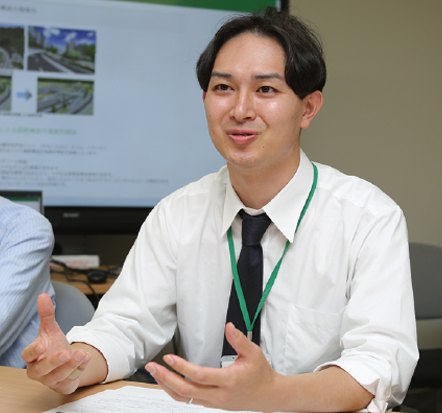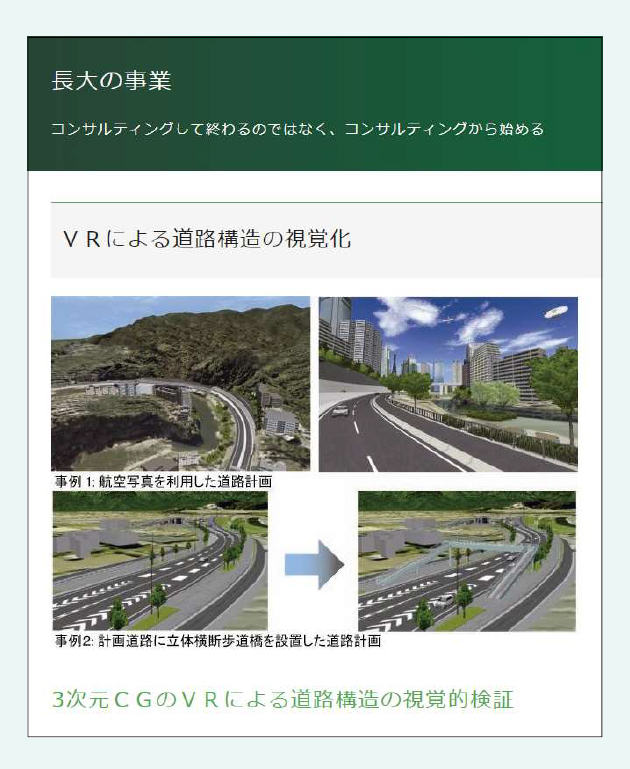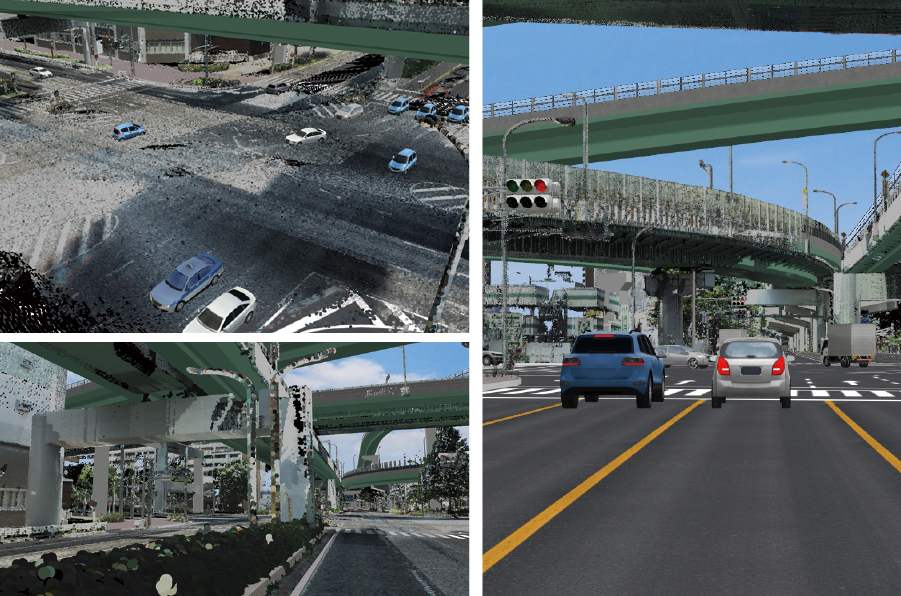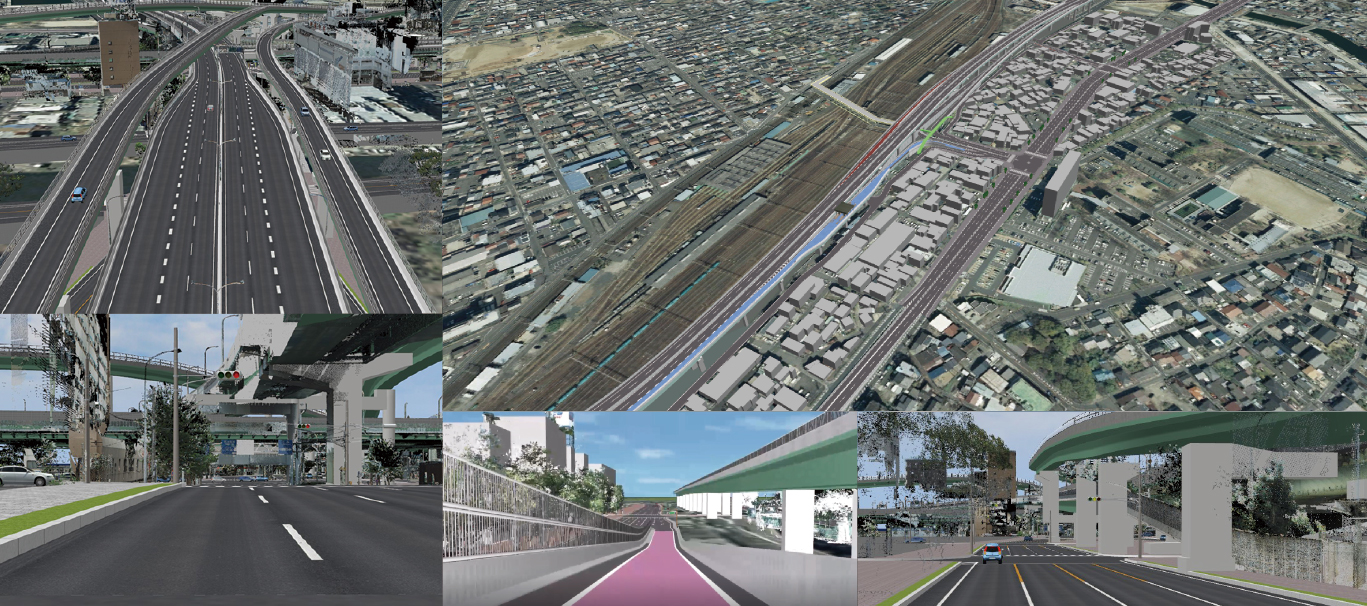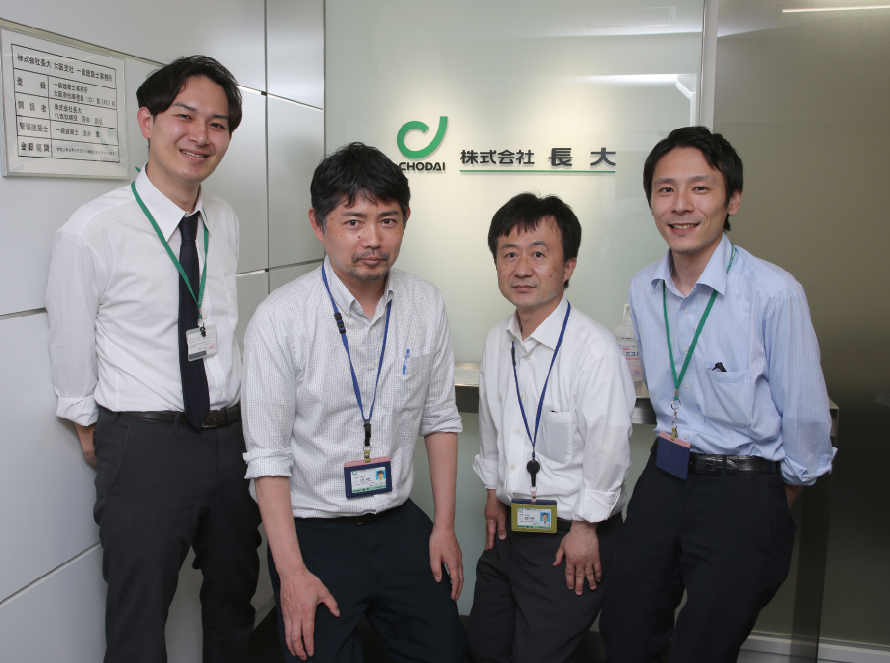|
||||||
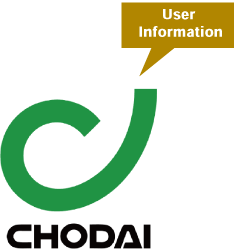 |
|
|||||
|
||||||
|
||||||
|
Furthermore, CHODAI also has six domestic and seven overseas group companies under the holding company "People, Dreams & Technologies Group Co., Ltd." which bears the catchphrase of CHODAI's management philosophy. Road Department 2 of Design Maintenance Division 2, Social Infrastructure Business Group based in the Osaka Branch, consists of four sections. For this interview, we spoke with members of Section 2, who are involved in the planning and design of various roads in Osaka and surrounding areas, as well as the preparation of presentation materials for such roads.
Restarting Use of UC-win/Road About 15 Years Ago Made VR All the More Accessible It was about 15 years ago when Mr. Ishizuka touched UC-win/Road for the first time. At that time in the Department, the software and DS that had been introduced before that time were not being used much. Mr. Ishizuka decided to try it on his own, thinking that he, with his surveying skills, could make effective use of them. When he actually used it, while handling them intuitively he realized that it was easier to create VR than he had expected. Then, he came up with a need to use VR to check the "visual distance" that allows drivers to see the traffic signals at intersections ahead of them from a predetermined distance in road planning. He used DS for simulating the VR of road environment he reproduced including intersections and traffic signals using UC-win/Road, to solve the problem. Following this success, chances of creating comparatively simple VR on his own increased, with additional cases of containing VR application in technological proposals. Along with this, the number of intersections to handle, which was just one initially, changed to the plural. Similarly, the road length to handle gradually became longer in larger scale. The fields of application of VR have expanded to include not only information sharing with the client but also materials for local explanatory meetings. Later, about 10 years ago, they received an order to create a large-scale VR for explanation to the client as well as at the local explanatory meeting about a new road planning and handled this work with support from FORUM8. Besides, use of VR in the Department has expanded in a diverse way to include examining visibility of signs in consideration of sunshine and other factors and landscape including structures such as bridges and planting zones. According to Mr. Ishizuka, it was so easy "to show the images in 3D," which had been difficult in the past, that VR instantly became familiar. "I think this ease of use led to the large number of VRs we created later on," he says.
Examples of Major UC-win/Road Applications in Recent Years, and Efforts to Strengthen the System A local government in Kansai area planned to develop a city planning road. Design was made for this, and the client showed its request that "it would be easier to understand to represent the plan in 3DVR at the explanatory meetings for the local residents before construction, communicating with different points of view". In July 2021, CHODAI was awarded a contract to examine the road environment. Meanwhile, CHODAI received an additional request for a more detailed housing model in VR. CHODAI delivered the results in March 2022, which also reflected this request. CHODAI was contracted to perform similar work related to the project in the following fiscal 2022. Local explanatory meetings are scheduled for the fall of this fiscal year as well, and CHODAI would like to handle them by using VR if it can gain the opportunity, according to Mr. Onga, Assistant Manager of the Department in charge of planning and designing roads, including intersections and structures. Regarding creation of the materials for examining a series of road environment, Mr. Toshiki Hamamura of the same Department, who until then had been mainly involved in planning the placement of signs etc., took up the challenge of using UC-win/Road for the first time under Mr. Ishizuka's guidance. Working in cooperation with FORUM8, they first created VR data for a section of approximately 1-kilometer based on the terrain data, road data, and detailed bridge design drawings. In creating a housing model in response to a local request, Mr. Hamamura and others actually visited the site and measured the general height of several targeted houses around the intersection, so that the residents could experience bodily sensation from their perspective. In this project, in response to local requests etc., light and noise shielding walls were installed near several intersections. In addition, in order for the residents to feel bodily sensation of the impact of the establishment of an access road on the existing park and the difference in the way the structures look like with and without the tree planting zones from the residents' perspective and from a bird's eye view, this material is structured to enable VR simulations of them. As another example, in fiscal 2020, they created VR for explanatory meetings of the plan for adding an entrance/exit to an expressway, which was expected to see an ever-increasing traffic volume. Due to the large scale of the project itself and the complex nature of the various elements involved, they used VR to represent items such as existing and new roads, related structures, road markings on the roadways and intersections, surrounding buildings, and toll booth models. Mr. Tsujisawa says that at the explanatory meetings, they figure out a good way so that they can have the participants to feel bodily sensation effectively by showing the VR driving videos along with the models.
Advantages of UC-win/Road, Increasing Needs for It to Support BIM/CIM "If you check the manual one by one, there is no end to it. If you just try UC-win/Road for now, you will get what you are looking for." Although basic knowledge of surveying and roads is required, UC-win/Road is easy to use and express objects due to its sensory operation, so it is quick to learn. Mr. Ishizuka also evaluates UC-win/Road for its flexibility in responding to detailed requests from clients, as it can capture moving images from any perspective freely. Furthermore, UC-win/Road can also import point cloud data, and depending on the specifications, capable of creating VR expressions with a more realistic feel. At the same time, he believes that the need for UC-win/Road will increase remarkably in the future as projects directly under the jurisdiction of MLIT has started to require BIM/CIM. Mr. Hamamura, who is in charge of UC-win/Road operations in supporting Mr. Ishizuka, recalls that he has generally been able to master it through intuitive use, although he sometimes checks the instruction manual. Mr. Onga has also realized that the detailed and realistic representation provided by UC-win/Road is evaluated in discussions with the client. In particular, he pays attention to the advantage of its capability of freely changing viewpoints. On the other hand, Mr. Tsujisawa says that he often uses 3D CAD software for BIM/CIM work. Although it is possible to create 3D models and driving simulations with other software specialized for design, he points out that there are limitations in terms of accuracy, etc., and that the creation made by them is not as good as that created with UC-win/Road for use as explanatory materials in the way of showing VR. However, he expects that since design software can also be used to create 3D models, which can be used to confirm the structure with the client, if these models can be imported directly into UC-win/Road and freely edited, it should lead to further improvements in work efficiency. In this sense, he believes that it is important for software users including him and software developers to have a stance of cooperating with each other to create better products. Currently, development is going on to support a function that enables point cloud data to be directly loaded into the metaverse for use with the FORUM8 Virtual Platform System "F8VPS". Therefore, CHODAI is considering the use of WebVR, which has enhanced its functions as a communication tool, in addition to UC-win/Road.
|
||||||||||||||
| (Written by Takashi Ikeno) (Up&Coming '23 Summer issue) |
|
||||
|
||||
